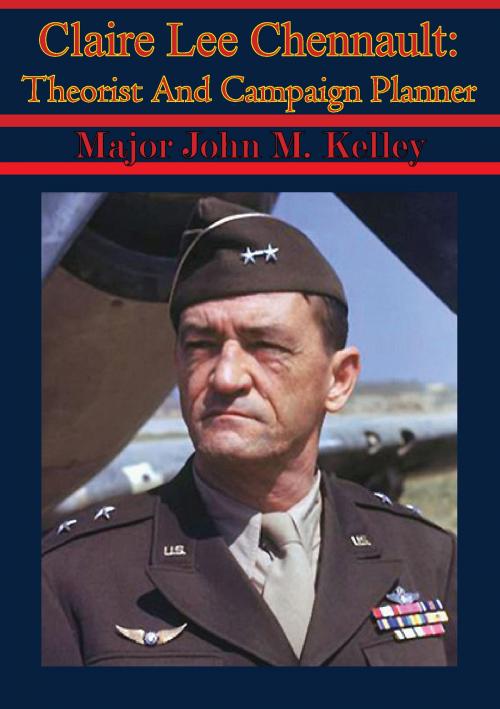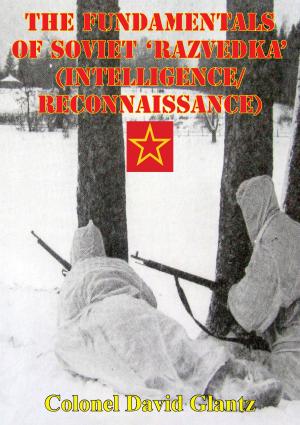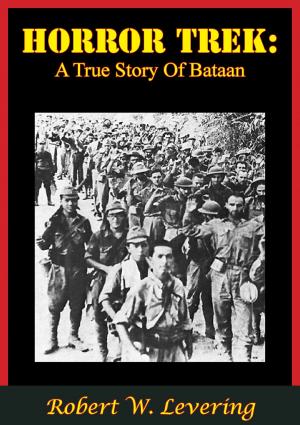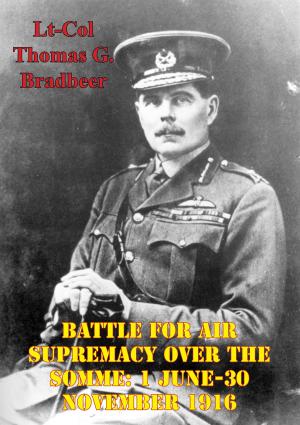Claire Lee Chennault: Theorist And Campaign Planner
Nonfiction, History, Germany, European General, Military, United States| Author: | Major John M. Kelley | ISBN: | 9781786252449 |
| Publisher: | Verdun Press | Publication: | November 6, 2015 |
| Imprint: | Verdun Press | Language: | English |
| Author: | Major John M. Kelley |
| ISBN: | 9781786252449 |
| Publisher: | Verdun Press |
| Publication: | November 6, 2015 |
| Imprint: | Verdun Press |
| Language: | English |
This monograph examines Claire Lee Chennault as a military theorist and campaign planner. It inquires whether Chennault’s evolution of a theory of war assisted his planning the China-Burma-India Campaign during World War II.
The monograph is divided into four sections. The first section focuses the historical background of Chennault and the war in Southeast Asia, emphasizing the war in China as this is where Chennault preponderantly fought from. In addition, it identifies the aims of the major belligerents of the Sino-Japanese War and why the Chinese actions were important to the Allied cause. The second section explores Chennault’s theory of war. This section explores how he developed his theory of war and the theory itself. The third section analyzes how Chennault’s theory met the Chinese and American ends (desired end state), means (application of the available resources), and ways (resource employment to achieve the ends). The fourth section concludes that Chennault’s theory of war assisted him in planning the China-Burma-India campaign during the Second World War.
Two functions precipitated from Chennault’s theory of war. First, his theory clarified the past and the present; notably the Great War and the airpower’s technological evolution. Second, it assisted Chennault to foresee the future. The future was realized because Chennault transcended the theorist role to that of an operational commander. His theory fostered an operational concept, the war of mobility, which developed into a fighting doctrine. With these resources and the invaluable contributions of the Chinese peasants, Chennault devised a method of employment that maximized the contributions from all the means. Chennault rationally created a campaign plan designed according to his theory.
This monograph examines Claire Lee Chennault as a military theorist and campaign planner. It inquires whether Chennault’s evolution of a theory of war assisted his planning the China-Burma-India Campaign during World War II.
The monograph is divided into four sections. The first section focuses the historical background of Chennault and the war in Southeast Asia, emphasizing the war in China as this is where Chennault preponderantly fought from. In addition, it identifies the aims of the major belligerents of the Sino-Japanese War and why the Chinese actions were important to the Allied cause. The second section explores Chennault’s theory of war. This section explores how he developed his theory of war and the theory itself. The third section analyzes how Chennault’s theory met the Chinese and American ends (desired end state), means (application of the available resources), and ways (resource employment to achieve the ends). The fourth section concludes that Chennault’s theory of war assisted him in planning the China-Burma-India campaign during the Second World War.
Two functions precipitated from Chennault’s theory of war. First, his theory clarified the past and the present; notably the Great War and the airpower’s technological evolution. Second, it assisted Chennault to foresee the future. The future was realized because Chennault transcended the theorist role to that of an operational commander. His theory fostered an operational concept, the war of mobility, which developed into a fighting doctrine. With these resources and the invaluable contributions of the Chinese peasants, Chennault devised a method of employment that maximized the contributions from all the means. Chennault rationally created a campaign plan designed according to his theory.



![Cover of the book Stalingrad To Berlin - The German Defeat In The East [Illustrated Edition] by Major John M. Kelley](https://www.kuoky.com/images/2014/august/300x300/9781782893202-n4Nr_300x.jpg)




![Cover of the book NEW ZEALAND DIVISION 1916-1919. The New Zealanders In France [Illustrated Edition] by Major John M. Kelley](https://www.kuoky.com/images/2014/june/300x300/9781782892427-VkWo_300x.jpg)
![Cover of the book Staff Ride Handbook For The Attack On Pearl Harbor, 7 December 1941 : A Study Of Defending America [Illustrated Edition] by Major John M. Kelley](https://www.kuoky.com/images/2014/august/300x300/9781782894513-K1Ik_300x.jpg)
![Cover of the book The Battle For Leyte Gulf [Illustrated Edition] by Major John M. Kelley](https://www.kuoky.com/images/2014/august/300x300/9781782899112-NyDQ_300x.jpg)




![Cover of the book TORPEDO 8 — The Story Of Swede Larsen’s Bomber Squadron [Illustrated Edition] by Major John M. Kelley](https://www.kuoky.com/images/2015/november/300x300/9781786251855-SG1X_300x.jpg)